SUMMARY
This is AI generated summarization, which may have errors. For context, always refer to the full article.
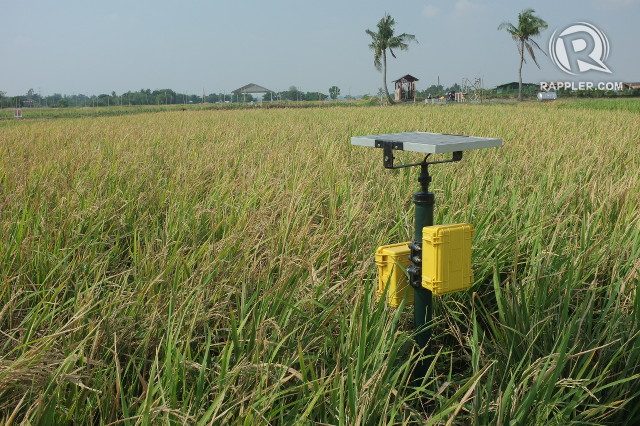
NUEVA ECIJA, Philippines – If Philippine farms were optimized to increase the income of rice farmers and improve productivity using new technology, how would they look like?
In a 5-hectare plot of land in Maligaya village, Nueva Ecija, such a farm exists.
The Philippine Rice Research Institute (PhilRice), through its FutureRice program, is close to completing its working vision of Philippine farms of the future – farms that are automated, connected to apps, save on water, harness green energy, and make use of natural fertilizers and pesticides.
FutureRice program director Roger Barroga said the demo farms aim to prepare farmers for two possible future scenarios: high-tech, mechanized farming to make Philippine rice competitive in the world market, and natural farming for a world where fuel has become scarce and expensive.
The “futuristic” farm also hopes to entice younger Filipinos to get into agriculture by showing them how the age-old practice of farming makes use of innovative technologies.
Since its opening, the FutureRice farm has been visited by thousands of Filipino farmers.
“We just completed one field day. There were about 2,000 farmers from all over the Philippines who came here. There’s a big opportunity for farmers to come here and learn about these technologies,” said Barroga.
So what’s in a Philippine farm of the future? Barroga toured Rappler around the demo farm and explained each feature.
1. Multiple crops
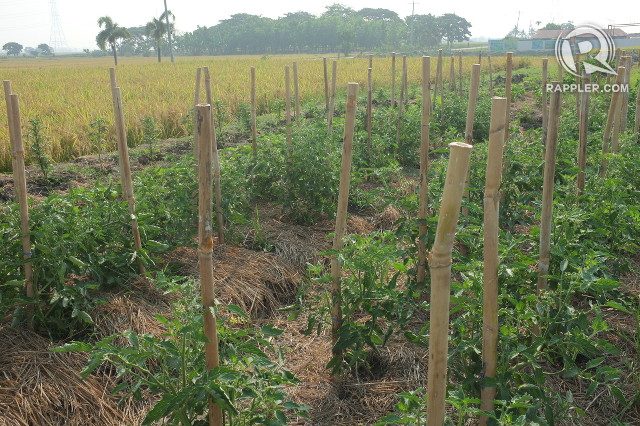
“The irony is, rice farmers still buy their vegetables from the market,” said Barroga.
In FutureRice, vegetables are planted alongside rice, providing an alternative source of income or more food for the farmer’s family.
Kangkong, sili, tomatoes, and eggplant grow from raised beds in a corner of the rice field. The raised beds are covered in plastic or dried rice straw to keep moisture in the soil and prevent weeds from growing. They also serve as irrigation canals for the veggies.
Aside from dedicated vegetable plots, farmers can choose to plant mung beans during the two months between the rice-growing periods. Usually, rice fields are left idle these two months. But planting mung beans that take only 30 days to grow ensures the land is still productive.
Mung beans, like most leguminous crops, are also nitrogen-fixing, making them the perfect way to pack the soil with nutrients right before the next rice-growing season.
Intercropping rice with vegetables is also a pest-management strategy because the vegetable plots act as “breakers” to contain pests infesting rice plants.
2. Water harvesting
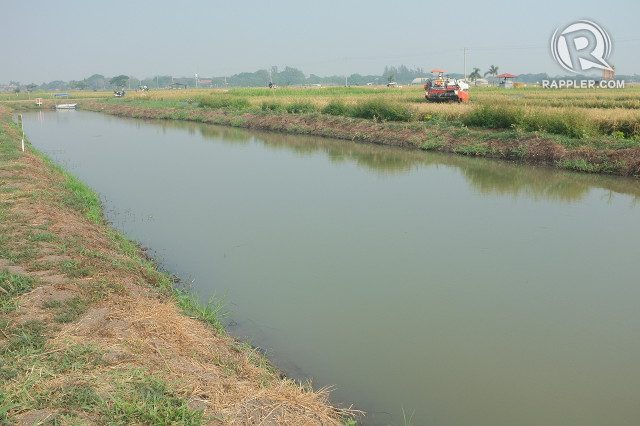
With a dry spell affecting several provinces and climate change afoot, water scarcity is a reality many farmers are now facing.
That’s why it’s not enough to depend only on irrigation canals bringing water from dams to your farm. FutureRice recommends digging ponds where farmers can store excess water in preparation for particularly dry days.
In the FutureRice farm, just enough water from the government irrigation canals are collected in the ponds. On days when the canals are dry, this water is circulated around the farm.
The pond at FutureRice is also equipped with kayaks and small boats, doubling as an agritourism feature.
3. Renewable energy
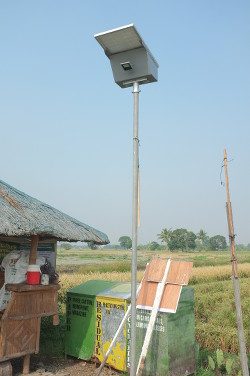
Nothing goes to waste in farms of the future. Rice hulls, usually thrown out by farmers, can be converted into energy used to power farming equipment.
A mobile gasifier system being developed by FutureRice uses this biomass-sourced energy to power water pumps to improve irrigation. It can also be used to drive rice mills.
If used alternately with the usual petrol fuels, this system can save the farmer 37% to 44% in fuel cost for irrigation.
The FutureRice farm also boasts of solar-powered lamps and bathrooms.
4. High-tech sensing equipment
One day, it may be normal for farmers to get a text message saying the water level in their rice paddies has reached a critically low level.
With the same cellular phone, farmers can command water pipes to release more water into their thirsty rice fields.
In FutureRice, such a device is already working. A Field Water Monitoring System uses a ground sensor to detect water levels. The device can even be programmed to automatically activate water pumps when it detects a certain water level.
5. Own weather station
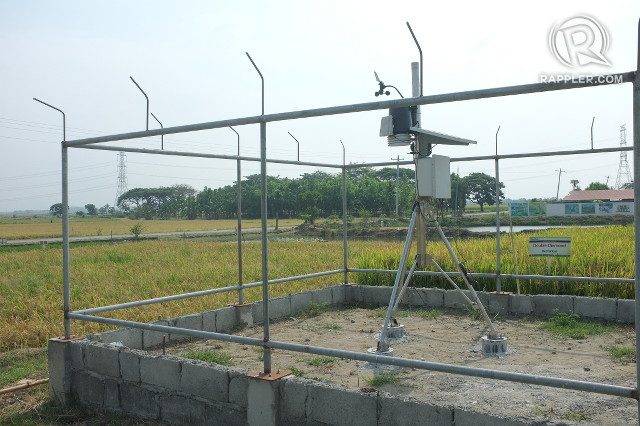
A Field Weather Monitoring Station detects wind direction, air pressure, rainfall, temperature, humidity, and moisture in the Future Rice farm. All this information is sent to a government central server every 30 minutes and eventually appears on a website accessible to all.
The data allows the farmer to make more precise decisions regarding their crops, said Barroga.
“If you notice the yield was low, you can look at the data and discover that for two months there was high wind velocity or low rainfall, both of which can stress rice plants and affect their yield,” he explained.
6. Connected to apps
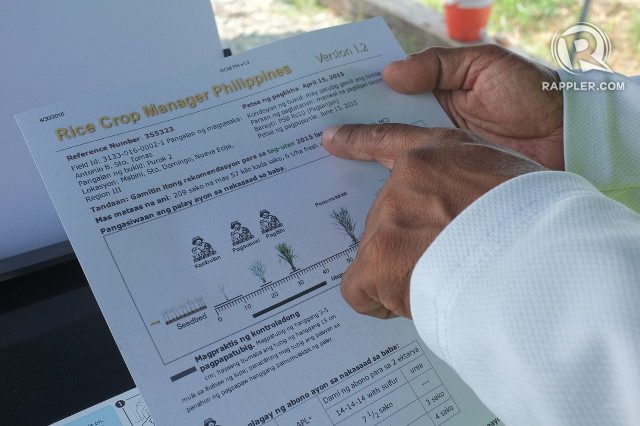
The dream is for farmers to be able to see every aspect of their farms on a tablet or smartphone, said Barroga.
Today, there are already apps customized to the needs of farmers. Rice Crop Manager, a web and mobile-based app developed by the International Rice Research Institute and PhilRice, presents farmers with a set of questions about their farm.
When all the answers are inputed, the app will generate recommendations on how the farmer can improve his yield. For example, it will tell him when to apply fertilizer, how much, and how often.
As of 2014, some 200,000 farmers have received recommendations from the app, Barroga said. His group aims to introduce the technology to 500,000 farmers this July.
Rice Crop Manager can be downloaded from Google Play as “RCM PH.”
7. Farming machines
Farming equipment can significantly save time, money, and labor. For instance, a mechanical rice transplanter (machine used to transfer rice seedlings onto a rice paddy) can easily finish one hectare in one hour. Without a transplanter, the same job would take an entire day and would require 8 to 10 laborers.
A single combine harvester can accomplish 3 tasks: reaping, threshing, and winnowing. When let loose on one square kilometer, it can do all this in 20 to 30 minutes.
8. Right rice varieties
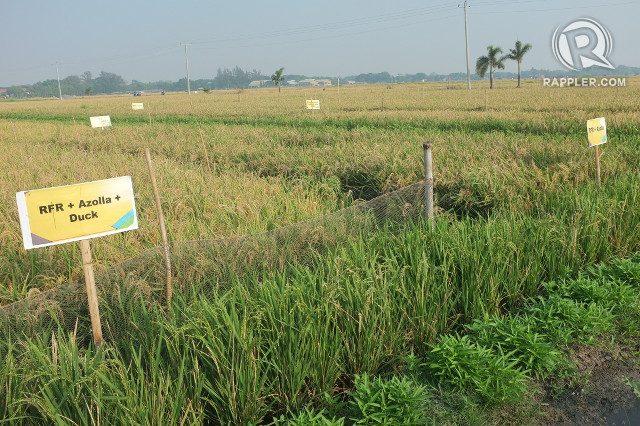
You can find all kinds of rice in the Future Rice farm: aromatic, traditional, hybrids. There are rice types that can withstand climate change, such as rice that can survive droughts or flood waters.
The smart farmer will know the right rice variety for them, whether their goal is to sell great-tasting rice or to grow rice despite extreme climatic conditions.
9. Makes the most of extreme conditions
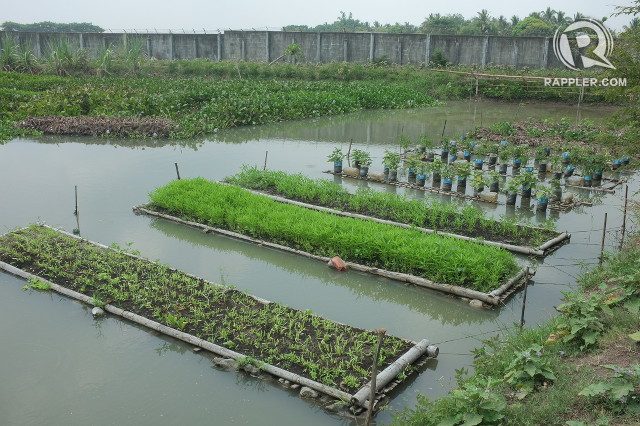
Flood-prone farm? No problem.
FutureRice demonstrates how farmers can plant vegetables on floating gardens made out of a bamboo raft and plastic bottles. This technique is also ideal for farming communities that live near marshes or rivers.
10. Natural pesticide and fertilizer
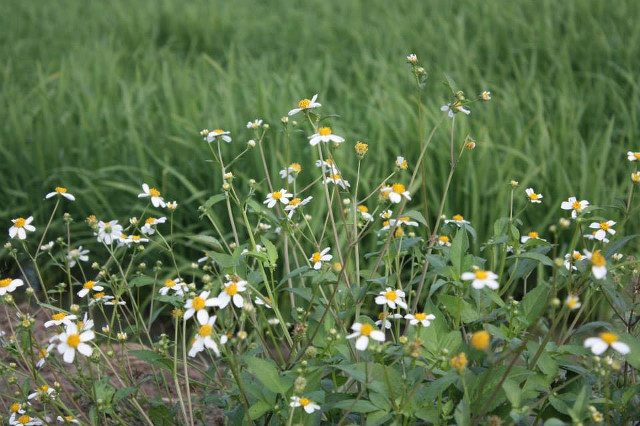
The marigolds and pink blooms on the edge of the rice fields are not just decoration. They are part of an all-natural pest management system used by Future Rice.
Certain flowers, said Barroga, act as a refuge for friendly insects – insects that eat the pests which ruin crops. By keeping such flowers near rice fields, farmers can ensure the presence of these helpful insects.
Another strategy? Let ducks loose in your farm. The ducks trample on the weeds and eat pests like snails, stem-borers, and leaf-feeders.
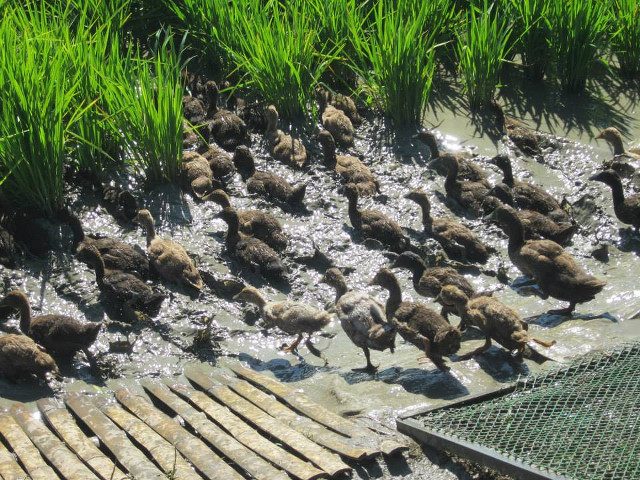
But make sure the age of the ducks matches the age of the rice plants, Barroga said. For example, only one-month old ducks should be released among one-month-old rice plants. This is because big ducks tend to trample on the younger, smaller rice plants.
The natural pesticides are so effective, according to Barroga, that his team has not had to spray chemical pesticides in the rice fields for 3 seasons.
Organic, farm-sourced waste like rice straw and carabao poop are turned into fertilizer through the action of microbacteria and earthworms – a process called vermicompost. – Rappler.com
To visit the FutureRice farm, you can send an email to TheFutureRiceProgram@gmail.com or check out their Facebook page.
Add a comment
How does this make you feel?
There are no comments yet. Add your comment to start the conversation.